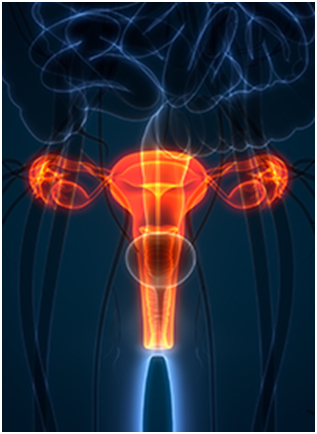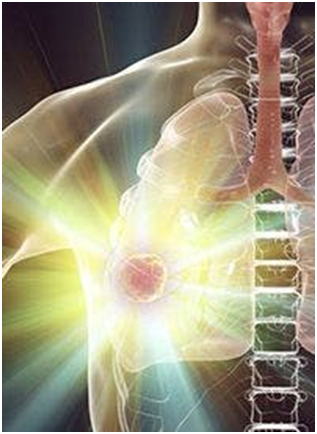Kyle Doherty
The addition of perioperative durvalumab to neoadjuvant chemotherapy led to a significant improvement in terms of pathological complete response and event-free survival compared with placebo plus chemotherapy in patients with resectable non–small cell lung cancer.

Lung Cancer © stock.adobe.com
The addition of perioperative durvalumab (Imfinzi) to neoadjuvant chemotherapy led to a significant improvement in terms of pathological complete response (pCR) and event-free survival (EFS) compared with placebo plus chemotherapy in patients with resectable non–small cell lung cancer (NSCLC), according to findings from the phase 3 AEGEAN trial (NCT03800134) presented during the International Association for the Study of Lung Cancer 2023 World Conference on Lung Cancer.
For patients who received the addition of durvalumab (n = 366) the pCR rate was 17.2% compared with 4.3% in the placebo arm (n = 374), for an absolute difference of 13.0% (95% CI, 8.7%-17.6%; P = .000036) at the final analysis.
Additionally, at a median follow-up of 11.7 months (95% CI, 0.0-46.1) and an EFS maturity rate of 31.9%, the median EFS was not yet reached (NR; 95% CI, 31.9-NR) in the durvalumab arm vs 25.9 months (95% CI, 18.9-NR) in the placebo arm (HR, 0.68; 95% CI, 0.53-0.88; log-rank P = .003902). The 12- and 24-month EFS rates were both in favor of the durvalumab arm vs the placebo arm at 73.4% vs 64.5% and 63.3% vs 52.4%, respectively. These data were from the first planned interim analysis of the study.
“Regardless of disease stage, the addition of perioperative durvalumab to neoadjuvant chemotherapy did not adversely affect the feasibility, type, approach, or timing of surgery in patients with resectable NSCLC and resulted in numerically higher R0 resection rates,” Tetsuya Mitsudomi, MD, a professor at the Division of Thoracic Surgery, Department of Surgery, Kindai University Faculty of Medicine in Osaka, Japan, added during the presentation.
AEGEAN enrolled patients with treatment-naïve stage IIA to IIIB resectable NSCLC who were slated to receive a lobectomy, sleeve resection, or bilobectomy as their planned surgery. Patients also needed to have an ECOG performance status of 0 or 1, confirmed PD-L1 status, and no EGFR/ALK aberrations.
Eligible patients were randomly assigned in a 1:1 manner to receive durvalumab at a dose of 1500 mg intravenously plus platinum-based chemotherapy every 3 weeks for 4 cycles or intravenous placebo plus platinum-based chemotherapy every 3 weeks for 4 cycles. After 4 treatment cycles, patients in both arms proceeded to surgery then received intravenous durvalumab at 1500 mg every 4 weeks for 12 cycles or intravenous placebo every 4 weeks for 12 cycles. Patients were stratified based on disease stage (II vs III) and PD-L1 expression (≥ 1% vs < 1%).
The coprimary end points were pCR by central lab review and EFS via blinded independent central review per RECIST 1.1. Key secondary end points were major pathologic response (MPR), disease-free survival (DFS), and overall survival (OS). The efficacy analyses were of the modified intent-to-treat population; this comprised all randomized patients without EGFR/ALK aberrations.
The baseline patient characteristics were well balanced between the durvalumab and placebo arms; the median ages were 65.0 years (range, 30-88) vs 65.0 years (range, 39-85), respectively. Most patients in both arms were male (68.9% vs 74.3%), had an ECOG performance status of 0 (68.6% vs 68.2%), White (56.3% vs 51.1%), and were former smokers (60.1% vs 59.6%). PD-L1 tumor expression levels at less in than 1% of tumor cells (33.3% vs 33.4%), 1% to 49% (36.9% vs 38.0%), and at least 50% (29.8% vs 28.6%) were all present at baseline.
Patients in the durvalumab and placebo arms had T1 (12.0% vs 11.5%, respectively), T2 (26.5% vs 28.9%), T3 (35.0% vs 34.5%), and T4 (26.5% vs 25.1%) as their primary tumors. The regional lymph node statuses were N0 (30.1% vs 27.3%), N1 (20.5% vs 23.3%), or N2 (49.5% vs 49.5%) in the durvalumab vs placebo arms, respectively.
In the durvalumab arm, all patients received neoadjuvant treatment and 84.7% completed 4 cycles of both chemotherapy agents. Most patients underwent surgery (80.6%), with 77.6% completing surgery.
Similarly in the placebo arm, nearly all patients received neoadjuvant treatment (99.2%) and 87.2% completed 4 cycles of both chemotherapy agents. Most patients underwent surgery (80.7%), with 76.7% finishing surgery.
Patients in the durvalumab arm with stage II (n = 102) and stage III (n = 264) disease had median durations of surgery of 3.5 hours (range, 1-24) and 3.5 hours (range, 1-10), respectively. In the placebo arm, patients with stage II (n = 108) and stage III (n = 266) disease had respective surgery durations of 3.4 hours (range, 1-24) and 3.3 hours (range, 1-24).
The median time from last neoadjuvant treatment dose to surgery was 34.0 days (range, 12-91) vs 34.0 days (range, 13-103) in the durvalumab and placebo arms, respectively. The respective median times from surgery to first adjuvant treatment dose were 50.0 days (range, 22-136) compared with 52.0 days (range, 21-141).
Surgical delay was reported in patients in both the durvalumab (17.3%) and placebo (22.2%) arms. Durations of delay lasted less than 2 weeks (9.5% vs 12.6%), 2 weeks to less than 4 weeks (4.1% vs 7.3%), 4 weeks to less than 6 weeks (2.4% vs 1.0%), and at least 6 weeks (1.4% vs 1.3%), respectively. Logistical reasons (9.5% vs 12.3%), adverse effects (AEs; 3.1% vs 4.3%), unresolved toxicity from previous study treatments (1.0% vs 1.3%), and other causes (4.4% vs 4.3%) were all listed as reasons for surgical delay.
Investigators used an open (49.2% vs 50.7%) or a minimally invasive (49.2% vs 47.0%) surgical approach in both the durvalumab and placebo arms, respectively. Surgery types included lobectomy (88.1% vs 85.4%) and pneumonectomy (9.2% vs 9.6%).
Among patients who completed surgery, the rate of R0 resection in the durvalumab arm (n = 284) was higher than that of the placebo arm (n = 287), at 94.7% vs 91.3%, respectively. Patients in both arms also experienced R2 resection (0.7% vs 0.7%) and R1 resection (4.2% vs 7.7%).
In the safety populations of durvalumab (n = 296) and placebo (n = 301), any-grade AEs possibly related to surgery were reported in 40.2% vs 39.2% of patients, respectively. Grade 3/4 events (8.4% vs 9.3%), serious AEs (11.1% vs 11.0%), and events resulting in death (2.0% vs 1.3%) occurred in both arms. The most common any-grade AEs that are surgical related were procedural pain (10.8% vs 11.3%), wound complication (3.7% vs 4.9%), pneumonia (3.7% vs 3.1%), anemia (2.8% vs 3.4%), pneumothorax (3.1% vs 2.8%), cough (1.8% vs 3.7%), and dyspnea (2.2% vs 3.1%).
Most patients in both the durvalumab (59.1%) and the placebo arms (60.1%) experienced a surgical complication. By Clavien-Dindo classification grade, a maximum of 1 (42.2% vs 43.5%), 2 (10.8% vs 8.3%), and at least 3 (6.1% vs 8.3%) complications were reported.
“With a clinically meaningful improvement in efficacy, no adverse impact on surgical outcomes, and a manageable safety profile, the addition of perioperative durvalumab to neoadjuvant chemotherapy is potential new treatment option for patients with resectable NSCLC,” Mitsudomi said in conclusion.
Reference
Mitsudomi T, Heymach JV, Reck et al. Surgical outcomes with neoadjuvant durvalumab + chemotherapy followed by adjuvant durvalumab in resectable NSCLC (AEGEAN). Presented at: International Association for the Study of Lung Cancer 2023 World Conference on Lung Cancer; September 9-12, 2023; Singapore. Abstract OA12.05.







Post comments